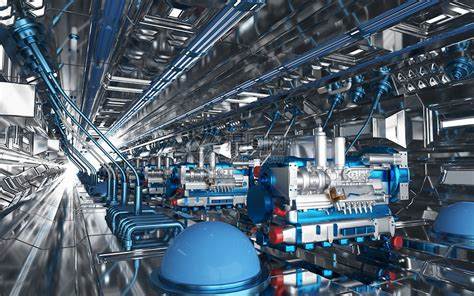In the ever-evolving world of machinery and automation, one component is quietly making a major impact—cross roller bearing. Known for its remarkable precision and load-bearing capabilities, this type of bearing is becoming the go-to choice for engineers and manufacturers across various industries.
But what exactly makes the cross roller bearing a preferred solution in high-performance applications? Let's dive into its growing significance and the advantages that are turning it into a future-proof investment for mechanical systems.
What is a Cross Roller Bearing?
A cross roller bearing is a compact, high-precision rotary bearing designed to handle loads from multiple directions—radial, axial, and moment loads—simultaneously. It features cylindrical rollers arranged at right angles to each other in a V-shaped groove, giving it an edge over conventional bearings when it comes to stability and stiffness.
This unique design minimizes the space required and improves motion control, making it ideal for robotic arms, medical imaging equipment, precision rotary tables, and aerospace instruments.
Why Cross Roller Bearings Are Gaining Popularity
1. High Rigidity and Load Capacity
Cross roller bearings are engineered to withstand heavy-duty applications while maintaining extremely tight tolerances. This makes them a solid choice for operations where even a micro-movement can impact performance—such as in CNC machines or high-precision inspection equipment.
2. Compact Design
The smart internal arrangement of rollers allows for a thinner and more compact design without sacrificing load-bearing strength. This results in more efficient use of space—a critical factor in modern design engineering where minimalism meets functionality.
3. Smooth, Accurate Rotation
One of the standout features of a cross roller bearing is its ability to deliver ultra-smooth and accurate rotation. The perpendicular roller orientation eliminates backlash and provides uniform motion, which is essential for applications that demand pinpoint precision.
4. Longer Service Life
The structure of a cross roller bearing evenly distributes the load across all rollers, reducing stress on individual components. This translates into less wear and tear, lower maintenance needs, and a significantly longer lifespan compared to traditional bearing systems.
Applications Where Cross Roller Bearings Excel
The versatility of cross roller bearings makes them suitable for a wide range of industries:
- Robotics: Enables fluid and precise movement in robotic joints.
- Medical Equipment: Ensures smooth rotation in CT scanners and MRI machines.
- Machine Tools: Provides rigid, vibration-free performance in rotary tables and indexing heads.
- Aerospace: Offers high-load stability for navigation and control systems.
Wherever reliability and accuracy are non-negotiable, a cross roller bearing becomes a strategic asset.
The Bottom Line
The rising demand for higher efficiency, compact solutions, and longer-lasting mechanical components has made the cross roller bearing a vital player in industrial innovation. Its unmatched combination of strength, precision, and space-saving design makes it an ideal choice for engineers seeking a future-ready solution.





Comments